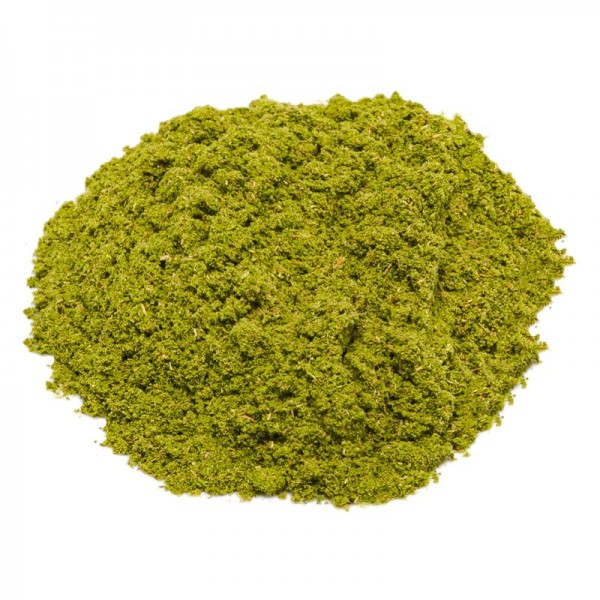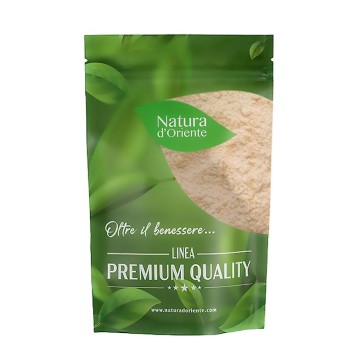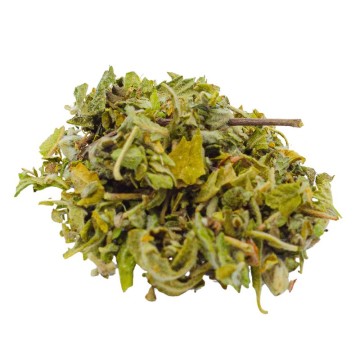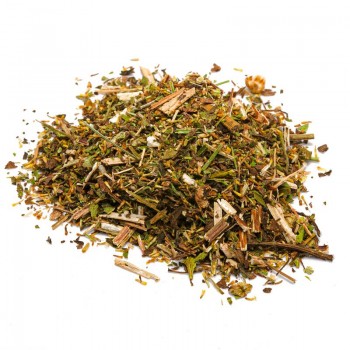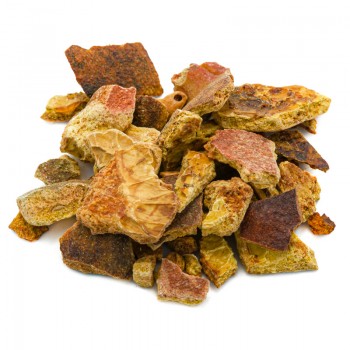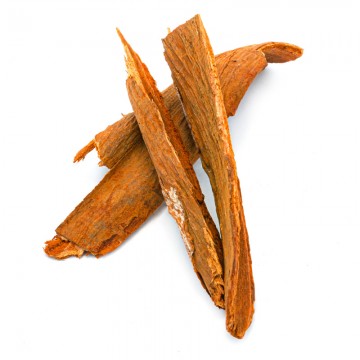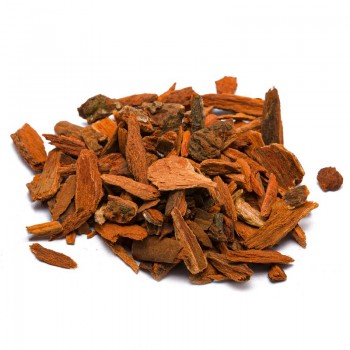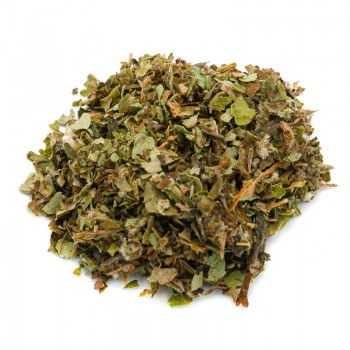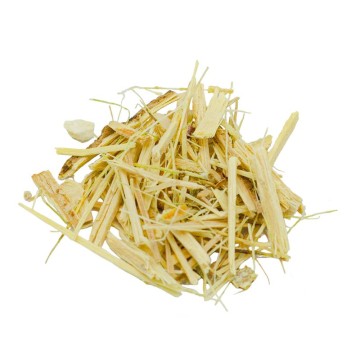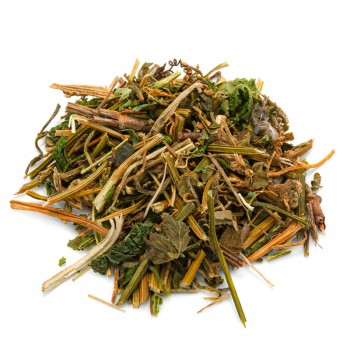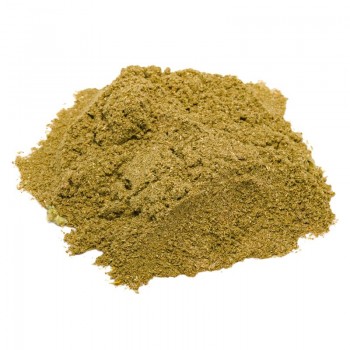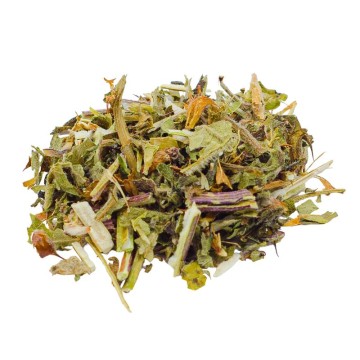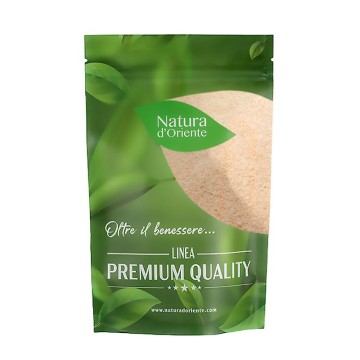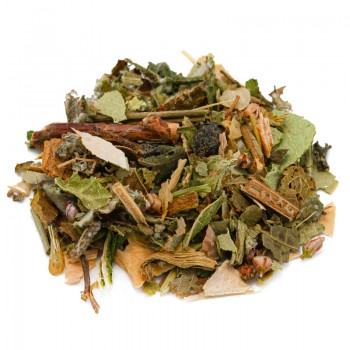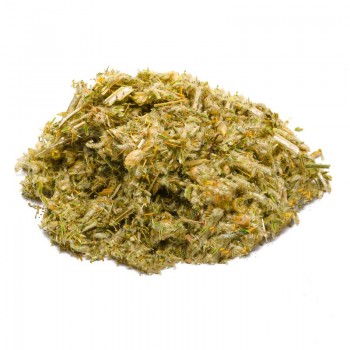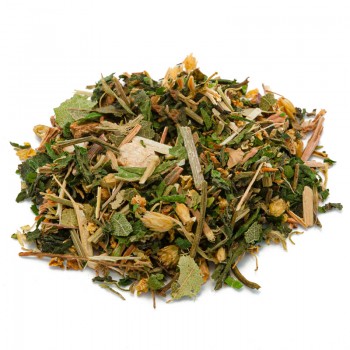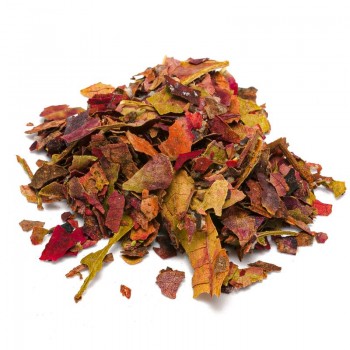The leaves are the most important part of the plant, because they contain a high percentage of sweetening compounds (steviol glycosides). Their properties are also antioxidants and are studied for their natural antimicrobial and antifungal activities.
The infusion of the leaves favors actions in our organism that help to reduce blood sugar, high blood pressure, inflammation and with immunostimulating effects.
In addition, the stevia herbal tea has beneficial properties for the gastrointestinal system, being antidiarrheal and diuretic. It also promotes proper digestion, with its qualities that fight stomach acid.
As an anti-hyperglycemic agent , ie to lower blood glucose levels, stevia is useful as a support in the treatment of diabetes mellitus and obesity.
We know that Stevia rebaudiana acts as a substitute for sugar and artificial sweeteners, and can be used in cooking or on food. The powder version is used in cooking for its sweetening power (300 times higher than that of sugar), but it has no carbohydrates or calories. For this, it does not affect the glycemic index of the blood, and also helps regulate the level of sugar by preventing hypoglycemia.
You can also use this Stevia leaf powder to sweeten a tea or herbal tea. Its anti-oxidative activity can be beneficial as an anti-aging agent and against oxidative stress, given the high content of phenols and total flavonoids in Stevia leaves. The ability of stevioside to counteract free radicals , also promotes the well-being of the liver.
The properties against hypertension of Stevia rebaudiana, would be due to the compounds stevioside.
The leaves of stevia also possess qualities that facilitate the contrast to the processes of chronic inflammation in the body. In particular, the role of stevia may be useful in reducing the inflammatory state associated with obesity.
Stevia rebaudiana has also been tested by several studies for its possible ability to inhibit the growth of certain bacteria and fungi in the body.
Origins and History of cultivation
The Stevia rebaudiana plant has been documented recently, despite having been used for centuries in its original territories.
It originated in Paraguay, and has spread to other territories in Brazil and South America, growing well on any type of soil with adequate humidity and drainage. Stevia attracted the attention of Europeans in the late nineteenth century, when the South American naturalist Moises S. Bertoni discovered the sweetening compounds of the leaves, from the native Paraguayans.
The sweet taste of the phytochemical compounds was then successfully isolated by the chemist Ovidio Rebaudi, from whom the species took its name (1905).
Among the Guarani Indians, Stevia rebaudiana was known as kaa he-he which means sweet herb . The leaves of the plant were used to enhance some recipes, and as a sweetener for their herbal infusions.
The first implantation attempt in Europe was conducted in 1942, in England, but with little success.
Later, the seeds were exported to Japan, where a great deal of effort was made for the settlement of the species in the 1960s.
Currently, the species is cultivated in several countries including Brazil, Uruguay, Japan, Korea, China, Thailand, Australia - the main exporting countries of S. Rebaudiana.
It is mainly consumed in Japan, but is popular as a diet sweetener around the world.
In the confectionery industry, the main sweet compounds (steviol glycosides) are extracted to become substitutes for refined sugar or sucrose. They are used in the pharmaceutical industries for their anti-hyperglycemic and anti-hypertensive properties. Stevia extracts are appreciated by those who practice fitness and care about their well-being, by those suffering from diabetes or high blood sugar.
Plant and flowers
Stevia rebaudiana is a plant that belongs to the Asteraceae family. 154 species belong to the genus Stevia, of which only two, S. rebaudiana and S. phlebophylla, produce the sweet compounds steviol glycosides.
Stevia rebaudiana is a perennial herb that grows up to about 1m tall, with a root system that spreads widely in the soil. The leaf is generally lanceolate with a serrated edge, and is the most important part of the plant. The flowers are usually small white and purple corollas.
The quality of the leaves, useful for their properties, is influenced by environmental factors such as soil conditions, the amount of sunlight received, the age of the leaves at the time of harvest, processing and conservation methods.
Nutritional values of Stevia rebaudiana leaves
The powdered leaves contain steviol glycosides, among which the most important are stevioside and rebaudioside A; steviol and isosteviol are metabolic components of stevioside. In addition, they contain antioxidants such as terpenes and flavonoids, and minerals such as zinc, iron, manganese, potassium. Among the vitamins in Stevia leaves, vitamin C and vitamin A are present.
How to use powdered Stevia rebaudiana leaves in herbal tea
The infusion of Stevia rebaudiana is obtained by putting about 3-5 grams of powdered leaves in a cup (250 ml), with water at 100 ° C.
Leave to infuse for 1 to 3 minutes, before using the herbal tea.
Stevia rebaudiana: side effects and contraindications
Stevia rebaudiana leaves are generally safe, but can still cause side effects such as bloating and gastrointestinal upset.
To avoid such effects, the Stevia rebaudiana herbal tea should be taken in the recommended doses.
The leaves may interact with some medications for diabetes, heart disease or to regulate blood pressure. Therefore, seek medical advice before using them regularly, if you show a pathological condition.
Stevia rebaudiana herbal tea is not recommended for children, pregnant and breastfeeding women.

